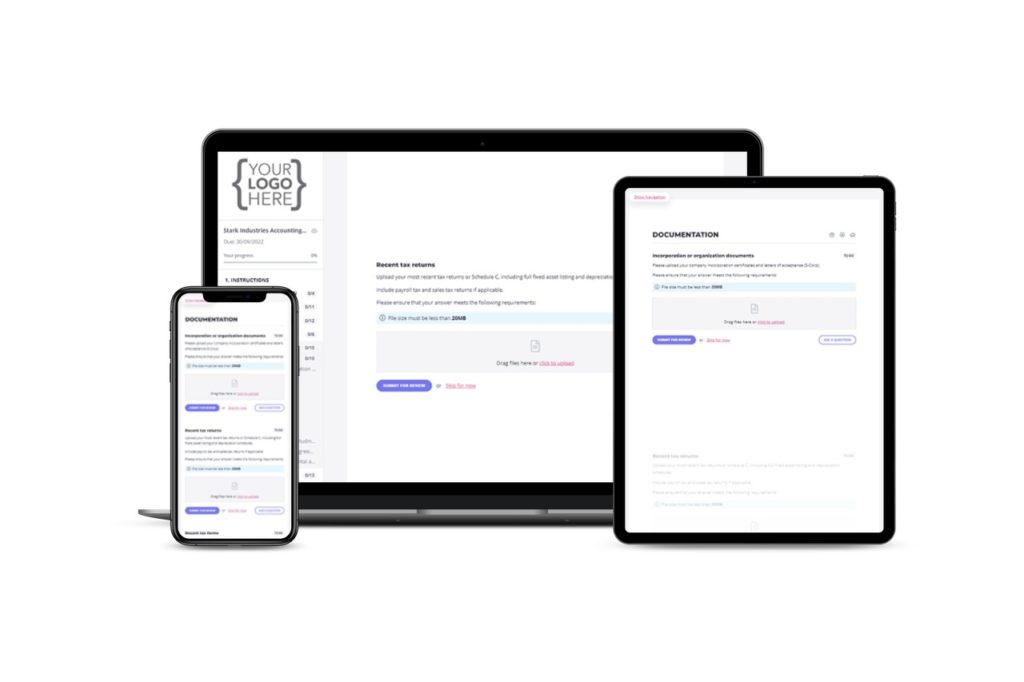If we polled a hundred different agencies about why they chose this line of work, none would say “to perform repetitive tasks.”
It’s safe to say that most are drawn to agency work because they get a special thrill from solving a client’s problems, not handling paperwork.
But these repetitive tasks are where you will make or break the working relationship with your client. Any account manager that’s handled multiple client accounts at once knows how hard it can be to manage all the little details. Overlook a crucial point or misplace a signed contract, and you’ve lost the client.
So, your agency client onboarding process is vital for the long-term success of your relationship. Instead of seeing it as a boring routine, view it as an opportunity. With an agency onboarding process in place, you can better know your client’s goals and prepare them to use all your different services.
Why your agency needs a process
Many agencies onboard haphazardly, winging it as they go along.
Mike on the creative team knew someone and brought them over, assuming the project manager knew the project scope. So, the team members get to work while overlooking a key detail. Or different team members have been interacting with the client for their specific department needs. But none of the information is gathered in a centralized place. That’s an easy way for vital information to get lost.
You create a repeatable process when using a standardized agency onboarding template across all your various client accounts. Then, you can tweak it, learn from it, and improve it after each successful project.
With a system in place, you don't have to scramble to find the right team members to handle a new client. Your agency knows who to assign to create client accounts, when to give the onboarding questionnaire, and how to run the kickoff meeting.
Best of all, an agency onboarding process scales with you as you grow, develop, and take on more clients.
You can deliver a studied, practiced, and professional experience every time.

Your opportunity to lay the foundations for a long-term relationship with your client
From your first kickoff meeting, your client’s team is judging your agency.
Sure, you blew them away in the initial presentation, but now is where the rubber meets the road. It’s time to show the client you can deliver on those flashy promises and that you’re both on the same page.
During onboarding, you ensure the client understands your working style, operations, and services. While they’re excited about starting work with you, they’re also usually still a little apprehensive about how the details will play out. Your agency client onboarding process provides a glimpse of how you work and, hopefully, gives them confidence in your operations.
Your opportunity to gain insight about your client
You're also learning about your clients with an effective agency client onboarding process. If you’ve built your client questionnaire right, you’ll understand the client’s expectations and communication style. You’ve seen their strengths and where they need more help and support.
When you’re pitching to the client, you’re focused on the specific problem they reached out to you about. Now that they’re signed on, it’s time to really get to know the client and their needs. Often, it’s up to you to help ensure the client understands the full extent of what they truly need. They may come to you for an ad campaign, but you discover their website is outdated and neglected. Or they think they need a TVC, but lack any real identity or branding.
By the end of your agency client onboarding process, you should be fully aware of the client’s real needs, issues, and goals.
Some of the additional benefits you enjoy because of your agency’s client onboarding process
Lower client churn
Keeping clients happy from day one goes a long way to ensuring they don’t abandon your agency halfway through a project. Did you know that new clients are 3 times more likely to leave you during the first 90 days? A formalized new client onboarding process results in a deeper client relationship and less churn.
Remove the guesswork
Many agencies get started with a client without ever asking how they define success or what they hope to see. Then, as the project progresses, they’re left with anxiety. Did they meet the client’s expectations? Did they do enough? When you take the time to get to know your client’s preferences, you can tailor your work to their needs. Why guess when you can ask at the start? Define expectations, and get to work meeting them.
Ensures compliance
Not all industries will deal with governmental or industry compliance regulations. But having a formal onboarding process ensures you can prove compliance with regulations should you have to prove it later during an audit.
Frees up time to take on more work
Many agencies spend too much time dealing with routine processes. To maximize profits, all agencies need to save time where they can. Many onboarding steps could be fully automated with the right project management software. Is it a valuable use of a team member’s time to constantly email clients about the same deliverables? How much more productive work could they do if that time was freed up through automation?
Increase upsells and clients
High customer satisfaction is the key to referrals. 84% of B2B buying decisions start by looking at referrals. You improve your chances of landing a referral when you wow the customer early in your process. Also, you have more opportunities to upsell services by taking them through all your services in the early stages.

How do you know it’s time to revisit your agency onboarding process?
Even if you have an agency onboarding template in place, it could be in desperate need of an overhaul. The new client onboarding process is typically something agencies create out of necessity. So it’s safe to say they aren’t usually approaching it with a long-term view.
For many agencies, it plays out like, “oh, we landed this client, umm…what do we need to get from them?” Someone creates a list, or you pool together a collection of emails from the client. Nothing was designed with new client experience in mind, and your processes lack fundamental project management guidelines.
But as you grow in size, status, and reputation, these early makeshift onboarding processes won’t meet client expectations.
Soon, your agency is bustling along. You’re holding kickoff meetings weekly, and it’s super easy to misplace your client’s details or overlook essential information without a formal system in place.
Here are some helpful questions to ask yourself to know whether it’s time to revisit your agency onboarding process:
- Are you regularly having to go back to clients to ask for the client’s details?
- Are you about to significantly shift in size or grow the number of clients you take on?
- Have you heard from clients that you’ve missed out on important client goals?
- Do you struggle to gather all the brand assets in one place?
- Does anyone on the team have to ask coworkers where to find client information?
- Have you lost the client’s brand guidelines and had to dig it out of an email chain?
Did you answer yes? Even if you didn’t, it could be time to revisit your agency’s onboarding process
Even if you’re not losing information, it’s worth reviewing your agency onboarding template periodically. Particularly if you’ve never looked at the process as an opportunity.
You’re missing out if you set up your internal processes solely to collect information.
Review your kickoff meeting and welcome package to ensure you’re highlighting the agency’s strengths and best products. If clients are coming to you with questions about if you can do this or that for them, chances are you haven’t briefed them well enough on what your agency’s solutions are.
Build a solid client onboarding experience showcasing your whole team and services. Remember, this is an opportunity. Don’t take it for granted or view it as something to whisk past.
What should you think about standardizing in your agency onboarding template?
Many aspects of your agency’s work will change depending on the client. That’s the nature of agency work. This lack of predictability is half the excitement for some.
However, that doesn’t mean everything will be unpredictable. Some documents and processes will carry over regardless of the size of the client or what services select.
Take advantage of these predictable aspects and tailor a customized user flow highlighting your strengths.
Some items that can be standardized across all projects:
Project assets: No matter the project or client size, you will deal with various file types related to the project. It’s best to formalize the details around assets early on. Where should files be uploaded, how are they handled, what do you need, etc.?
Communication: Who talks to whom on the project? If a client has an issue, who do they go to? If you need a file or piece of information, who do you contact within the client’s organization? How often do they expect to be updated? It’s all too easy to overlook or take communication for granted. Getting a client to agree in writing on communication expectations will save you headaches down the road.
Progress reports: Similar to communication, you need to standardize how and when you update the client on progress. Setting this up early saves you from the dreaded email asking about the status of projects.
Day one experience: Every customer will have their first day as a new client with your agency. Where that goes next is up to the specifics of the project. But you can control that day one experience. What kind of experience do you want all clients to share? How can you give new clients an experience that reflects your agency’s ideals and values?
An example agency client onboarding process checklist
The nuances of your agency onboarding template will differ by how you operate, the number of clients you take on, and the specifics of your industry. But there are some documents and processes that are universal:
- Sharing your proposal
- Issuing your contract and Terms and Conditions
- How you will collect payment from the client
- Sending the client onboarding questionnaire
- Providing the client a welcome package
- Kicking off the project.
- Checking in with the client.
That’s just a bit to help you get started. If you need more specific information about how to create a digital marketing client onboarding checklist template, we’ve got you covered here.

How we help streamline your agency onboarding process
There are a few tools out there you can use to create your new client questionnaire and build your agency onboarding process. For example, Google Forms and Gravity Forms. These have been the go-to for many agencies over the years, but they have their drawbacks.
In fact, Google Forms was what we started out using, but their drawbacks were a continuous pain in the a** for us.
We created Content Snare to fix the annoyances like having to finish the forms in one go and the constant need to update the client over email. A project management tool is supposed to free up your time, not create more work, right?
Benefits:
- Collect all the details you need into one place
- Automate reminders to avoid constantly emailing the client to follow up on deliverables
- Create a single source of truth with sign-offs and approved documents all in one place
- Tailor the client’s experience by crafting custom workflows for each project
Get help optimizing your agency’s client onboarding process
A substantial part of your agency’s success on a project is determined by how you onboard your new clients. Yes, it might not be as exciting as brainstorming a new ad campaign. But when done right, it makes a huge difference throughout the lifetime of your relationship with the client.
You only get one chance to make a first impression. Your onboarding experience sets the tone for everything that follows.
If you need a new agency onboarding template, take a look at Content Snare. Our software helps automate and streamline the various onboarding processes, from the initial onboarding questionnaire to successful project completion. Freeing you up to do what you do best.

